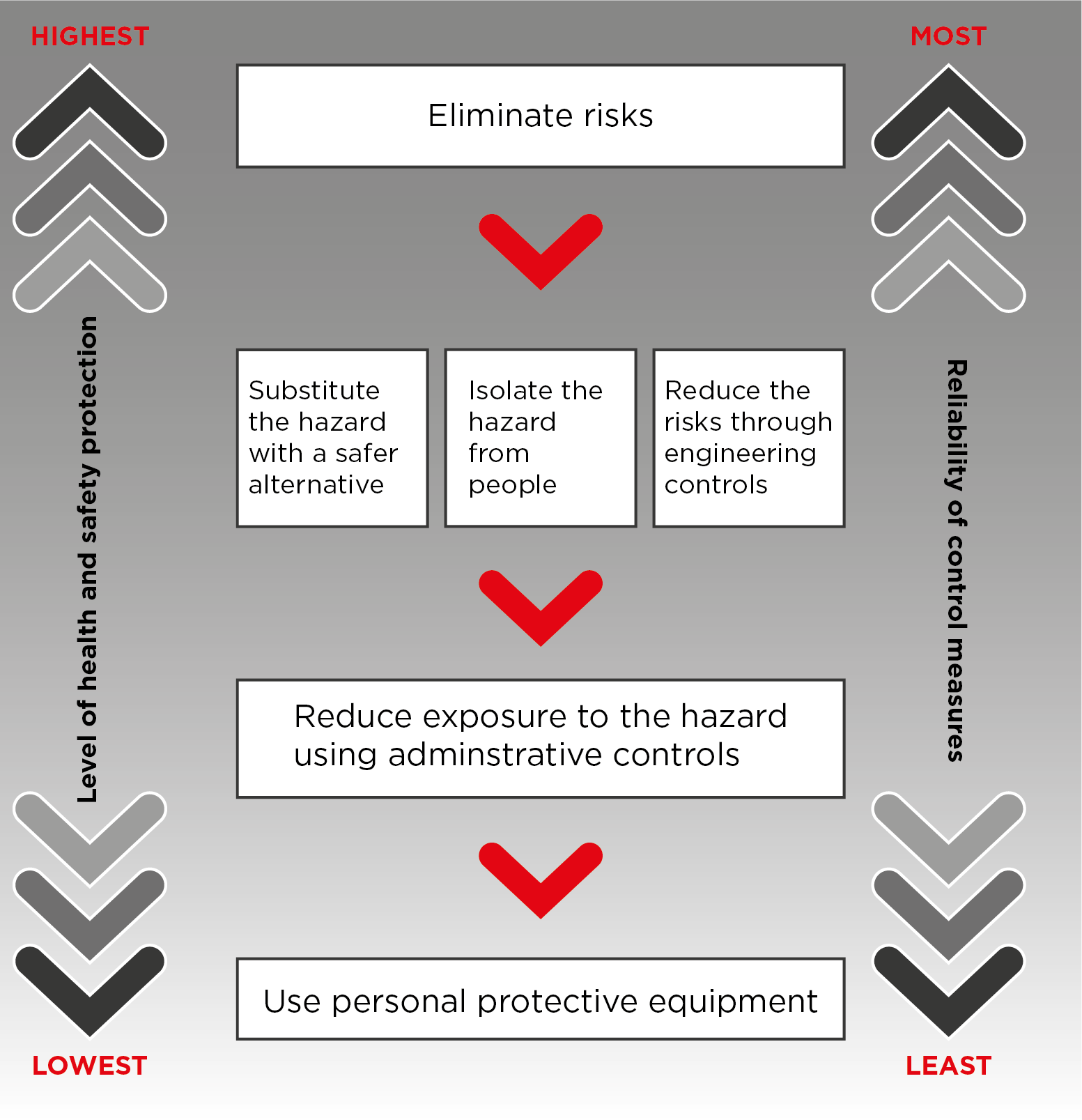To manage risks of RCS, you must first identify whether RCS is being generated and released into the air at your workplace. Workers are exposed to RCS whenever it is airborne and they can breathe it in.
Different types of rock and rock products can contain different amounts of crystalline silica, for example:
|
Type |
Amount of crystalline silica (%) |
|
Granite |
25 to 40 |
|
Shale |
22 |
|
Natural sandstone |
67 |
|
Engineered stone |
> 90 |
|
Aggregates, mortar and concrete |
various |
RCS is generated in workplace processes such as crushing, cutting, drilling, grinding, sanding, sawing or polishing of natural stone or man-made silica containing products. RCS can be generated and found:
- during manufacturing and construction
- when mining or tunnelling
- in waste or sand-based products, and
- in materials brought to your workplace.
A label or safety data sheet (SDS) may not always be available at a workplace or with a product that contains crystalline silica. If you do not have an information sheet or SDS for a product, you might need to talk to your supplier to find out how much crystalline silica is present.
Common crystalline silica containing materials and products include:
- stone products (natural and engineered)
- composite dental fillings
- manufactured timber
- bricks
- cement
- asphalt
- drywall and some plasterboards
- grout
- mortar
- tiles, and
- even some plastic material.
Activities that release RCS into the air include:
- fabrication, installation, maintenance and removal of engineered stone countertops
- excavation, earth moving and drilling plant operations
- clay and stone processing machine operations
- paving and surfacing
- mining, quarrying and mineral ore treating processes
- road construction and tunnelling
- construction labouring and demolition
- brick, concrete or stone cutting; especially using dry methods
- abrasive blasting (blasting agent must not contain greater than 1 per cent of crystalline silica)
- foundry casting
- angle grinding, jack hammering and chiselling of concrete or masonry
- hydraulic fracturing of gas and oil wells
- pottery
- crushing, loading, hauling and dumping of rock or muck, and
- clean-up activities such as sweeping or pressurised air blowing of dust.
Examples of work with potentially harmful exposures to RCS
Fabricating, installing, maintaining and removing crystalline silica containing products
RCS can be generated when cutting, grinding, trimming, removing or blasting silica containing products or from storing or disposing of dusty waste from these processes.
Engineered stone products can contain up to 97 per cent silica. The high amount of silica means that there is a very high risk of workers developing breathing problems and silicosis if they breathe in dust made from these products. An increase in the number of workers diagnosed with silicosis and progressive massive fibrosis has been linked to working with engineered stone.
Mining, quarrying, tunnelling and extractive minerals
There are high risks of worker exposure to RCS during mining, tunnelling and mineral extraction.
Construction, building and demolition
RCS can be generated on site from tasks such as concrete cutting, grinding and using power tools on stone.
Controlling risks to health and safety from exposure to RCS
As the duty holder, you will need to implement a combination of different control measures to eliminate or minimise the risks from RCS at your workplace. This includes when working with naturally occurring crystalline silica (for example in mining or tunnelling) or working with products containing crystalline silica (such as engineered stone).
Safe Work Australia has published a guide to Working with silica and silica containing products, and a model Code of Practice: Managing the risks of respirable crystalline silica from engineered stone in the workplace.
You can manage risks of exposure to RCS by selecting and implementing measures using the hierarchy of controls (Figure 1).
Figure 1 - The hierarchy of control measures.
Under the model WHS Regulations, PCBUs must not process, or direct or allow workers to process, engineered stone unless the processing is controlled. Any cutting, grinding, trimming, sanding, abrasive polishing and drilling of engineered stones using power tools or other mechanical plants, must be controlled using one of the following:
• a water suppression (wet cutting) system
• an on-tool dust extraction system, or
• a local exhaust ventilation system.
In addition, all workers who process engineered stone must be provided with and wear respiratory protective equipment.
Additional control measures may be required to minimise exposure to RCS so far as is reasonably practicable, such as shift rotation or exclusion zones. If you rely solely on only one or two control measures, there may be a significant risk to your worker’s health and you may be breaching WHS laws.
It has been shown that solely relying on PPE does not adequately protect your workers.
You must be careful to make sure that when you are controlling RCS that you are not introducing other hazards or not fulfilling your WHS duties for other hazards.


